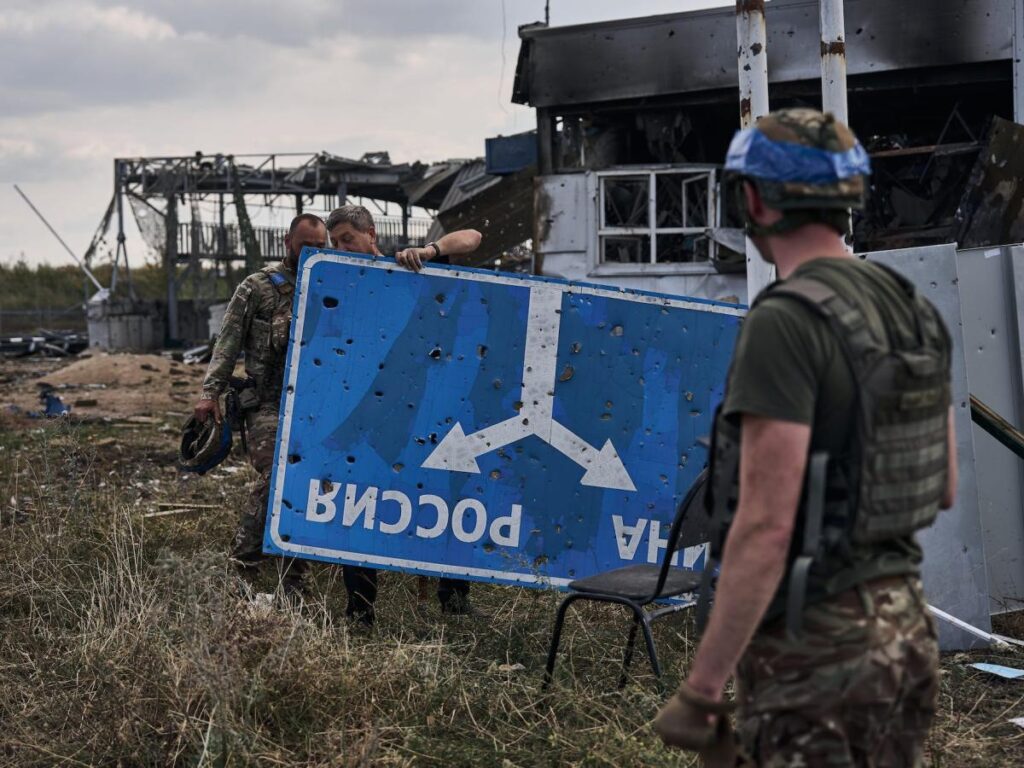The geopolitical landscape has undergone significant fluctuations since Donald Trump’s election as President of the United States, particularly concerning the ongoing war in Ukraine. Following Trump’s victory, there has been a notable rebound in stocks associated with Russian enterprises, reflecting a surge of investor optimism that his administration may foster conditions conducive to resolving the conflict. This sentiment stands in stark contrast to the immediate aftermath of Russia’s invasion of Ukraine in 2022, which precipitated a dramatic decline in the valuation of Russia-linked stocks amid fears of extensive sanctions and economic repercussions. Investors, wary of heavy sanctions that crippled many firms operating in Russia, had previously retreated from the market. However, Trump’s election has invigorated a sense of potential diplomatic thawing, igniting a marked upswing in the shares of companies with Russian ties.
Entities such as Raiffeisen Bank International and OTP Bank have experienced notable spikes in stock prices, underscoring a resurgence in investor confidence. Raiffeisen Bank’s stock has surged by 12.2%, reaching a seven-month peak, while OTP Bank saw a 4.9% increase. Similarly, Turkey’s construction giant Enka Insaat has enjoyed an 8.6% rise in shares during this period. These developments suggest that investors are cautiously optimistic about the possibility of lessening hostilities and a return to more stable economic conditions. The recent downturn for Russia-linked stocks was largely attributed to the sweeping sanctions implemented by the U.S. and European nations in response to the invasion. These punitive measures aimed to sever the Kremlin’s financial lifelines, compelling many international businesses to withdraw from Russia and creating significant operational challenges for remaining entities.
The market dynamics shifted after the election, demonstrating an eagerness among investors to embrace the prospect of peace negotiations. Notably, Ukraine’s dollar-denominated bonds have also rebounded, announcing their highest levels since the onset of the war. This resurgence indicates a broader confidence among investors regarding Ukraine’s economic resilience, as expectations build around Trump’s potential to facilitate peace. Trump’s campaign promises included commitments to engage in dialogue with both Ukrainian President Volodymyr Zelenskyy and Russian President Vladimir Putin, suggesting a direct approach to diplomatically addressing the challenges posed by the war. His assertions during the presidential debates, particularly his insistence that he could resolve the conflict in less than a day, have positioned him as an influential player in the peace process.
While the atmosphere has turned hopeful, reservations persist regarding the viability of Trump’s proposed negotiations. Analysts caution that Putin’s vested interests in prolonging the conflict could hinder any attempts at diplomacy, presenting a significant challenge to achieving lasting peace. Despite the optimism surrounding the prospect of a demilitarized zone or other potential compromises, the underlying complexities of the situation remain daunting. There is an emerging recognition that any negotiations would need to navigate the motivations and strategic calculations of the Russian leadership, further complicating Trump’s ability to deliver on his ambitious peace promises.
In a gesture reflecting the anticipation surrounding Trump’s presidency, Ukrainian President Zelenskyy extended his congratulations and expressed optimism regarding the possible shift in diplomatic strategies. He underscored the importance of Trump’s “peace through strength” approach, suggesting that such a philosophy might provide a pathway to achieving just peace in Ukraine. This recognition from Zelenskyy highlights the high stakes involved and the precarious nature of the conflict’s future. Given the devastation wrought by the ongoing war, any potential advancements in peace negotiations carry substantial ramifications for both Ukraine and its constituents, alongside international stakeholders closely monitoring the situation.
The evolving narrative surrounding Trump’s presidency and its implications for the conflict in Ukraine underscores the delicate balance between diplomacy and military strategy in global affairs. As investors react to the potential for a resolution, the interconnectedness of economic and geopolitical factors becomes increasingly apparent. The situation remains fluid, with developments likely to unfold as negotiations potentially take shape. With economic markets signaling a tentative optimism and leadership changing hands in the U.S., the hope prevails that the long-standing conflict may soon see a transformative shift towards peace, fostering renewed stability in the region. The world watches as these intertwined fates collide, hoping for a resolution that has so far remained elusive.

